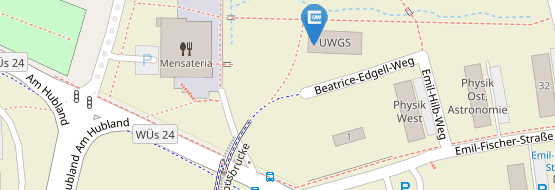Integrative Biology
Section Speakers
Wolfgang Rössler
Christian Wegener
Markus Riederer
The section of Integrative Biology aims at the understanding of complex biological phenomena and systems. The concept of integrative biology is applied both as an approach to and an attitude towards the practice of science. It deals with integration across all levels of biological organization, from molecules to the biosphere, and with diversity across taxa, from viruses and micro-organisms to plants and animals.
The hallmark of research in this section of the GSLS is the combination of organismic and molecular biology and a focus on the use of model organisms. At present the model organism platform ranges from single cell Eukaryotes such as Chlamydomonas, to animals (Ants, Drosophila, honey bee, zebrafish, medaka, Xenopus, chicken, mouse) and plants (Arabidopsis, poplar, rice). The list is being continously complemented by other important model organisms to study “common concepts in living organisms” and dissect the complexity of ecosystems.Subject-areas include biochemistry, bio-organic chemistry, biophysics, molecular biology, microbiology, physiology, cell and developmental biology, genetics, bioinformatics, ecology, and evolutionary biology. Participating faculty will emphasize the use of comparative and integrative approaches for teaching and research conducted in both laboratory and field.
A typical set of questions can be illustrated with the study of the socio-physiology in honeybees. The members of a colony typically spend most of their lives inside their nest which, therefore, plays an essential role in shaping the organisms, both in development and evolution. Just like the physiology of an individual is regulated by internal feedback-loops, on the level of an insect colony “social homeostasis” takes place in which the members of the colony, by creating and maintaining their micro-environment, reach a higher-level feedback which may influence their physiology which, in turn, allows them to create and maintain their micro-environment. Another example is the plant surface which is covered by a solid lipid membrane called the cuticle. For herbivorous insects alighting on leaf or fruit surfaces the cuticular wax film and secondary metabolites associated with it form the first and primary zone of contact with the plant. Depending on the chemical composition of the leaf surface the herbivore may accept the plant as a host and start feeding or oviposition, or not.
Strong links to the GSLS section of Neuroscience exist based on the neurobiological foundations that determine behaviour and the interaction of individual organisms with their environment.
If you want to learn more about research going on in this area in Würzburg, there are several ways to proceed:
A. Have a look at the collaborative research programs and research training groups, mostly supported by the DFG:
- GRK 1342 Lipid-based signal transduction system
- SFB 1047 Insect timing: mechanisms, plasticity and interactions
B. Check the profiles of the principal investigators associated with this section
C. Visit the homepages of the individual research centers and institutes
- Theodor-Boveri Institute
- Julius von Sachs Institute
- Organic Chemistry
- Hygiene and Microbiology


